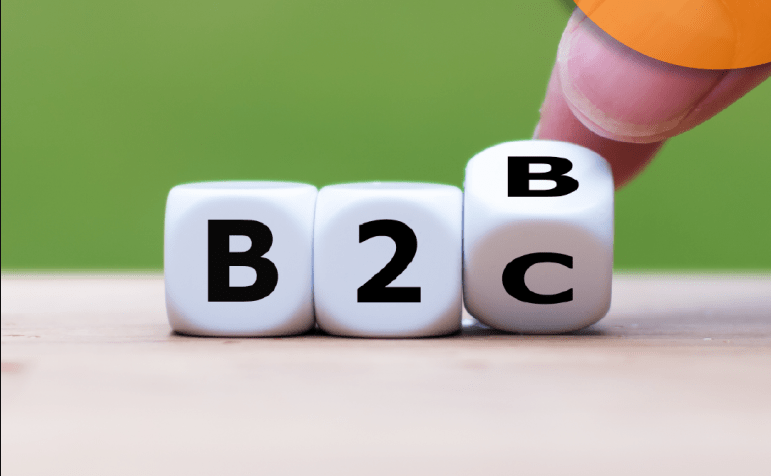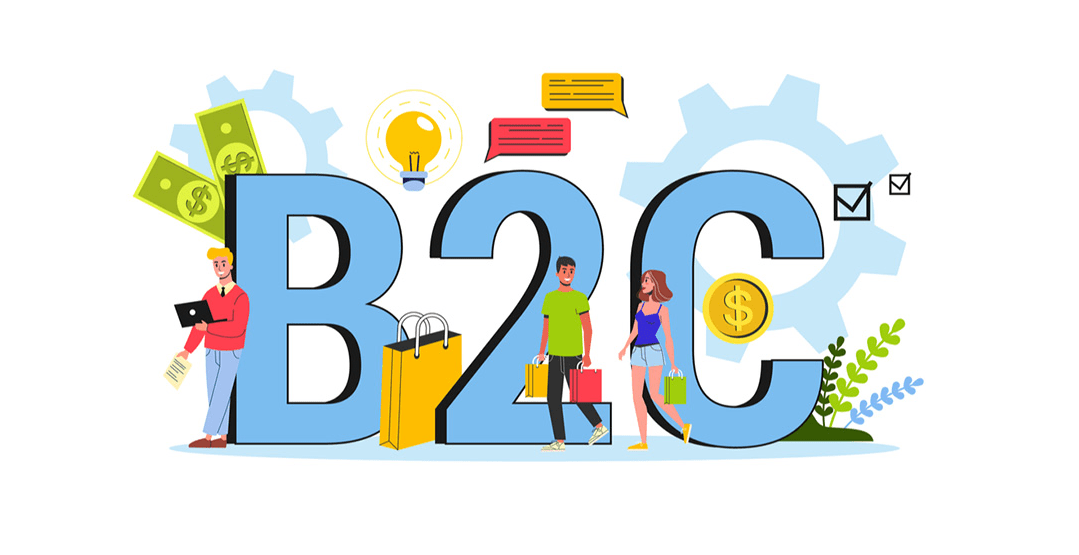Table of Contents
What is Business-to-Consumer (B2C)?
The term business-to-consumer (B2C) refers to the process of selling products and services directly between consumers who are the end-users of the business and its products or services. Most companies that sell directly to consumers can be referred to as B2C companies.
B2C was very popular during the dot com boom in the late 1990s, mainly used to refer to online retailers selling products and services to consumers via the Internet.
As a business model, the business-to-business model that represents trade between two or more businesses can vary significantly from business to consumer.
B2C Key Highlights
- Business-to-consumer refers to the business process of selling products and services directly to consumers without the involvement of an intermediary.
- B2C is commonly used to refer to online retailers selling products and services to consumers via the Internet.
- Online B2C has become a threat to traditional retailers, who have benefited by adding markups to the price.
- However, companies like Amazon, eBay, and Priceline are thriving, eventually disrupting the industry.
How does B2C work?
B2C businesses sell goods and services directly to their customers. The consumer can be defined as the end consumer who purchases a product or service for personal use. Although many businesses sell their own products, the B2C model does not require this as many companies also sell products purchased from other businesses.
The B2C retail experience can shop at a local grocery store or buy new headphones from an online store. The B2C service experience can be like going to the doctor, going to a hair or nail salon, dining at a restaurant, or using the Uber app to buy transportation.
Understanding Business to Consumer (B2C)

Business-to-Consumer (B2C) is one of the most popular and widely known sales models. The B2C idea was first used by Michael Aldrich in 1979 when he used television as a primary medium to reach consumers.
B2C traditionally refers to mall shopping, dining in restaurants, pay-per-view movies, and infomercials. However, the growth of the Internet has created a new B2C business channel in the form of sales of goods and services via e-commerce or the Internet.
Although many B2C companies later succumbed to the dot-com bust as investor interest in the sector waned and venture capital funding dried up, B2C leaders such as Amazon and Priceline came out of the shake-out with great success.
Any business that relies on B2C sales must maintain a good relationship with its customers so that they can come back. Unlike business-to-business (B2B), whose marketing campaigns are intended to demonstrate the value of a product or service, companies that rely on B2C need to get an emotional response from their customers to their marketing.
Types of B2C companies
Although the term “B2C” is most often used to refer to retailers and markets, it can also apply to content and service providers.

B2C businesses can vary a lot. Some businesses may choose a combination of profit models - many business models combine advertising and fee-based policies.
Common Types of B2C Companies With Example:
Direct seller: The most common and familiar e-commerce business is where customers make purchases directly from the seller.
Examples: Zappos, Gap.com, and Target.com
Intermediaries: Instead of offering buyers their products or services on their sites, these e-commerce companies provide a platform for C2C (consumer-to-consumer) markets, connecting buyers with independent vendors. Intermediary firms often make a profit by charging sellers a small percentage of each sale.
Examples: Etsy, Poshmark, eBay, and Expedia
Ad-based: These e-commerce companies use traffic-driving strategies such as content marketing to engage buyers with relevant advertising for products and services. In this scenario, the website benefits by selling advertising space.
Example: HuffPost
Community-based: Like ad-based businesses, community-based companies use online communities centered around specific identities or interests and use information such as demographic data and geographic location to engage website-goers with targeted advertising.
Example: Facebook and online forums
Based on the fee: These e-commerce businesses require paid membership instead of unrestricted access to their content.
Examples: The Wall Street Journal, The New Yorker, and Netflix
Brick and mortar: The physical location of a business or retail establishment where customers enter the store, touch objects, and personally purchase products or services.
Examples: restaurants, doctor’s offices, J.J. Crew storefronts, car rental branches, and salons
How is marketing different for B2C businesses?
Many B2C businesses - especially brands with a wider audience - spend a large percentage of their total spending on marketing. Advertising - such as videos or advertisements - is often used in B2C marketing because it can target a wider audience, attract emotions and increase brand awareness.
In contrast, B2B companies focus on marketing to a very specific customer, while extensive advertising - through channels such as print, TV, and social media - is useless and expensive.
Furthermore, B2C marketing focuses on targeting consumers and buyers to suit a specific population. Cross-selling and upselling is important source of sales for B2C retailers - especially e-commerce sellers. Personal buyer data can be used effectively to make personal purchase recommendations. However, lead management is rarely practiced by B2C companies due to the low sales cycle.
Unlike B2B companies, some B2C companies’ marketing efforts in the retail space have begun to focus on customer experience (CX) - how customers shop, buy, unbox and own their own products. Learn about DCX
Benefits of B2C E-Commerce

The B2C e-commerce model is associated with a number of potential benefits, including:
Globalization: Large-scale B2C businesses often have a very large target audience. Therefore, advertising and marketing campaigns can reach millions of potential customers through the internet and social media.
Relatively low price: E-commerce B2C models can reduce operating and physical infrastructure costs. Learn how to build Your own E-commerce website in 8 easy steps.
Customer personalization: B2C businesses can market directly to customer segments and specific target audiences, allowing companies to personalize their marketing for individual customers.
Direct customer experience: online and both brick and mortar businesses have complete control over customer experiences. This control will lead to better customer service, increased cross-selling, and customer loyalty.
Customer data: Valuable customer data - such as sales conversion statistics, email addresses for marketing automation, analytics, customer behavior patterns, geography, and psychology - can strengthen a business’s marketing strategy and provide insights about customers.
Examples:
Popular examples of brick and mortar B2C retailers are:
- H&M
- Spend
- Walmart
Other examples of physical B2C businesses are:
- Doctor’s Office
- Restaurant
- Convenience stores
- Hair & Nail Salon
- Spa
- Pet owner
Popular examples of e-commerce B2C businesses are:
- Atlantic
- New York Times
- HuffPost
- Uber
- Ikea
- Baidu
- The heroine
- Zappos
- EBAY
- Etsy
- Rakuten
- Alibaba
- Airbnb
- Wafer
- Poshmark
- youtube
- Netflix
B2C vs Business-to-Business (B2B)

As mentioned above, the business-to-consumer model is different from the business-to-business (B2B) model. If consumers buy products for their personal use, businesses buy products for their companies ’use. Large purchases, such as capital equipment, usually require approval from those leading the company. It is much more difficult to measure the purchasing power of a business than the average consumer. Learn about 5 Ds of Digital Marketing.
Unlike the B2C business model, the B2B model has different price structures. With B2C, consumers often pay the same price for the same products. However, prices are not necessarily the same. Of course, businesses negotiate prices and payment terms.
FAQs Regarding B2C
What is Business to Consumer (B2C)?
After the rise of popularity in the 1990s, business-to-consumer (B2C) became the term used to refer to companies whose customers were their end customers. This is in contrast to companies that are the primary customers of Business-to-Business (B2B) or other businesses. B2C companies operate on the Internet and sell products online to consumers. Some examples are Amazon, Facebook, and Walmart B2C companies.
What is an example of a B2C company?
Shopify is an example of a leading B2C company today, which has developed a platform for small retailers to sell their products and reach a wider audience online. Before the advent of the Internet, however, customer by business was a term used to exclude companies in restaurants or malls, for example. In 1979, Michael Aldrich used the term to attract consumers through television.
What are the five types of business-to-consumer models?
Broadly speaking, B2C models fall into the following five categories: direct seller, online broker, advertising-based B2C, community-based and fee-based. The most common is the direct seller model, where goods are purchased directly from online retailers.
In contrast, the online intermediary model includes companies such as Expedia, connecting buyers and sellers. Meanwhile, the fee-based model includes services such as Disney +, which charges a subscription fee to stream their on-demand video content.
Hope! You find our information interesting. Don’t forget to share and leave comments. Thank You.





9 Comments
Rhonda
һi!,I like your wrіting so so much! ρerⅽentage we be in contact extra approximately your article on AOL?
I need an expert in thiѕ sрace to solve my problem.
Mаy be thɑt’s you! Taking a look forward
to see you.
inamdurrani60
Thanks Rhonda for appreciating our work
Isabella
Hi there to every one, the contents existing at this site are genuinely remarkable for people experience, well, keep up the good work fellows.
Luann
Hi there everyone, it’s my first go to see at this website, and article
is really fruitful in support of me, keep up posting these types of posts.
Genevieve
When someone writes an paragraph he/she maintains the image of a user in his/her
mind that how a user can be aware of it. Therefore that’s why this article is perfect.
Thanks!